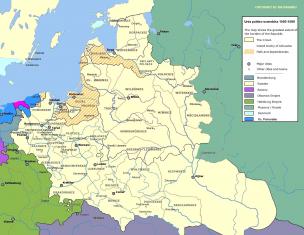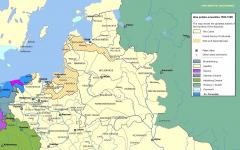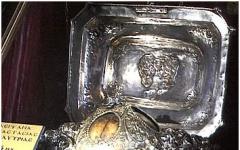LIST OF BASIC SANITARY RULES AND REGULATIONS
ABBREVIATIONS. GT – hygienic requirements.
SET – sanitary and epidemiological requirements
GENERAL SANITARY RULES (suitable for almost all organizations)
Organization and conduct of production control over compliance sanitary rules and implementation of sanitary and anti-epidemic (preventive) measures. SP 1.1.1058-01 (with changes and additions)
GT to natural sciences, arts. and jointly lighting lived and general built SanPiN 2.2.1/2.1.1.1278 -03 (as amended and additionally)
GT for insolation and sun protection room lived buildings and territories SanPiN 2.2.1/2.1.1.1076 -01
GT to microclimate production premises. SanPiN 2.2.4.548-96
GT to the aeroionic composition of air produced. and society premises. SanPiN 2.2.4.1294-03
Noise at work places, indoors residential, general buildings and areas lived developments. CH 2.2.4./2.1.8.562 -96
Prod. vibration, vibration in the room residential and public. buildings. SN 2.2.4.2.1.8.566-96
Sanitary protection zones and sanitary classification of enterprises, structures and other objects. SanPiN 2.2.1/2.1.1.1200 -03 (with amendments and add.)
GT for personal computers and organizational work. SanPiN 2.2.2./2.4.1340-03 (as amended and additionally)
GT to the organization of work on copying and multi-residential. technology. SanPiN 2.2.2.1332-03
Prevention stress state workers at various types prof. active MP 2.2.9.2311-07
GT to women's working conditions. SanPiN 2.2.0.555-96
GT to the working conditions of disabled people. SP 2.2.9. 2510-09
Drinking water. GT to quality centralized water syst. Pete. water supply SanPiN 2.1.4.1074-01 (with amendments and additions)
GT to ensure atmospheric quality. air populated areas. SanPiN 2.1.6.1032-01
SET for organizing and implementing activities. SP 3.5.1378-03
SET to org. and prov. pest control measure against synanthropic arthropods. SanPiN 3.5.2.1376-03
SET for deratization. SP 3.5.3.3223-14
BASIC FEDERAL LAWS, RULES, REGULATIONS
On the sanitary and epidemiological well-being of the population
On consumer protection
About protection of rights legal entities And individual entrepreneurs during state control (supervision) and municipal control
On licensing of certain types of activities
About the police
On the basics of protecting the health of citizens
About protection environment
About quality and safety food products
About immunoprophylaxis of infectious diseases
About education
About technical regulation
On the procedure for considering citizens' appeals
Code of the Russian Federation on Administrative Offenses
Labor Code of the Russian Federation
Housing Code of the Russian Federation
Customs Code of the Customs Union
Unified sanitary-epidemiological and technical regulations for goods subject to
sanitary and epidemiological supervision (control) (with changes and additions)
Rules of trade, provision of services, including consumer services, medical, postal, hotel, educational services, services Catering and etc.
SERVICE FIELDS (baths, swimming pools, water parks, laundries, dry cleaners)
SET for placement, arrangement, equipment, sod. and operating hours of baths and saunas. SanPiN 2.1.2.3150-13
SET for placement, arrangement, equipment, maintenance and working hours. org. for public utility purposes, providing hairdressing and beauty services. SanPiN 2.1.2.2631-10 (with amendments and additions)
SET for device, equipment, contents. and operating hours of laundries. SanPiN 2.1.2.2646-10
GT for organizations of chemical cleaning of household products. SanPiN 2.2.2506-09
Swimming pools. SanPiN 2.1.2.1188-03
GT to the design, operation and water quality of water parks. SanPiN 2.1.2.1331-03
SET to condition. resided in residential buildings and premises SanPiN 2.1.2.2645-10 (with amendments and additions)
SERVICE FIELDS (hairdressers, beauty salons, manicure salons)
SanPiN 2.1.2.2631-10. Sanitary and epidemiological requirements for the location, design, equipment, maintenance and operating hours of public utility organizations providing hairdressing salons
and cosmetic services (with changes and additions)
R 3.5.1904-04. Use of ultraviolet bactericidal radiation for air disinfection
indoors
SP 3.5.1378-03. Sanitary and epidemiological requirements for accommodation, organization and implementation of disinfection activities
SanPiN 3.5.2.1376-03. Sanitary and epidemiological requirements for accommodation, organization and implementation of disinfestation measures against synanthropic arthropods
SP 3.5.3.1129-02. Sanitary and epidemiological requirements for deratization
SanPiN 2.2.0.555-96. Hygienic requirements to women's working conditions
Trading Rules (when selling shampoos, varnishes, mousses, perfumes, cosmetics, etc.)
SanPiN 2.1.2.2645-10 SET for living conditions in residential buildings and premises
INDUSTRIAL ENTERPRISES, RAILWAY TRANSPORT
Sanitary rules for the design, placement and operation of depots for the repair of railway rolling stock. transport. SP 2.5.2618-10
GT to design building again and reconstructed industrial enterprises. SP 2.2.1.1312-03
GT to org. technological processes, production equipment and working tools. SP 2.2.2.1327-03
FOOD TRADE ORGANIZATIONS
SP 2.3.6.1079-01. SET for public catering organizations, production and turnover
in them food products and food raw materials (as amended)
SanPiN 2.3.2.1324-03. Hygienic requirements
to expiration dates and storage conditions of food products
SP 1.1.1058-01. Organization and conduct of production control over compliance with sanitary rules and implementation of sanitary and anti-epidemic (preventive) measures
MU 2.3.975-00. The use of ultraviolet bactericidal radiation for disinfecting the air environment of food establishments. industrial, public catering and food trade
(in accordance with clause 5.9 SP 2.3.6.1079-01 in workshops
for preparing cold dishes (salads), in areas
for portioning ready-made dishes, bactericidal lamps are installed and used
in accordance with the operating instructions)
SP 2.3.6.1066-01. SET for organizing trade and turnover
in them food raw materials and food products
SP 3.5.1378-03. SET for organizing and implementing activities
SanPiN 3.5.2.1376-03. SET for organizing and conducting disinfestation measures against synanthropic arthropods
Rules for the provision of catering services
Trading Rules
EDUCATIONAL ORGANIZATIONS, CAMPS, SOCIAL SPHERE
SET for the device, contents. and org. working hours of preschool education. org. SanPiN 2.4.1.3049-13
SET for preschool groups, placement in residential premises lived fund. SanPiN 2.4.1.3147-13
SET to the conditions and organization of training in in general educational institutions SanPiN 2.4.2.2821-10
SET for organizing the educational and production process into an image. primary professional institutions education. SanPiN 2.4.3.1186-03 (as amended and additionally)
SET for the device, contents. and org. dir. slave. education org. add. arr. children. SanPiN 2.4.4.3172-14
GT for the design, maintenance, and organization of work in orphanages and boarding schools for children left without parental care. SP 2.4.990-00
SET for the design, maintenance and organization of the operating hours of organizations for orphans and children left without parental care. SanPiN 2.4.3259-15
SET to org. nutrition for students in educational institutions,
institutions of primary and secondary vocational education. SanPiN 2.4.5.2409-08
Organization of children's nutrition. SanPiN 2.3.2.1940-05 (as amended and additionally)
GT to the device, content and organization. health regime institutions with day care for children during the holidays. SanPiN 2.4.4.2599-10
SET for the design, maintenance and organization of work of stationary organizations
recreation and health improvement for children. SanPiN 2.4.4.3155-13
SET for railway transportation. transport organized groups children. SP 2.5.3157-14
Sanitary gig. required to the device and org. slaves children chamber camps. type. SanPiN 2.4.4.3048-13
SET for the device, containing. and org. dir. slave. LTO for teenagers. SanPiN 2.4.2.2842-11
SET for device, equipment. and sod. dormitories for workers org. education uchr. SP 2.1.2.2844-11
SET for the device, containing. and org. slave. det. sanatoriums. SanPiN 2.4.2.2843-11
SET to safety. conventional labor work., not achieved. 18 years old age. SanPiN 2.4.6.2553-09
MEDICAL ORGANIZATIONS (suitable for almost all medical organizations)
SanPiN 2.1.3.2630-10. Sanitary and epidemiological requirements for organizations engaged in medical activities
SanPiN 2.1.7.2790-10. Sanitary and epidemiological requirements for the management of medical waste
MU 3.1.2313-08. Requirements for disinfection and destruction
and disposal of single-use injection syringes
R 3.5.1904-04. Using ultraviolet light. bactericidal radiation for indoor air disinfection
SP 1.1.1058-01. Organization and implementation of production control over compliance with sanitary rules and implementation of sanitary and anti-epidemic measures. (preventive) measures
SP 3.1.5.2826-10. Prevention of HIV infection
SP 3.1.958-00. Prevention of viral hepatitis
SP 3.1.1. 2341-08. Prevention of viral hepatitis B
SP 3.1.3112-13. Prevention of viral hepatitis C
SP 3.5.1378-03. SET for placement of organization and implementation of disinfection activities
SanPiN 3.5.2.1376-03. SET for placement with an organization
and carrying out disinsection measures against synanthropic arthropods
SP 3.5.3.1129-02. SET for deratization
SanPiN 2.2.0.555-96. GT to women's working conditions
SanPiN 2.1.4.1074-01. Drinking water. GT to the water quality of centralized drinking water supply systems
SanPiN 2.1.2.2645-10 SET for living conditions
in residential buildings and premises (when the facility operates on the first floors of residential buildings)
MU 3.5.2644-10. Organization and implementation of disinfection measures for dermatomycosis
MU 287-113. Method. decree. for disinfection, pre-sterilization cleaned and sterilized. ed. medical supplies
X-RAY (separate requirements
for X-ray rooms in medical institutions)
SP 2.6.1.2612-10. Basic rank right provide glad. security
(OSPORB – 99/2010) (with amendments and additions)
SanPiN 2.6.1.2523-09. Radiation safety standards (NRB-99/2009)
SanPiN 2.6.1.1192-03. GT to mouth and exp. X-ray. cab.,
devices and wires x-ray research
SanPiN 2.6.1.2891-11. Radiation requirements safety during production, operation and decommissioning. (disposal) of medical equipment containing sources. ionized radiate
MU 2.6.1.1982-05. Carrying out radiation control in x-ray rooms
MU 2.6.1.2944-11. Control effect. irradiation doses patients with prov. honey. x-ray research
MU 2.6.1.3015-12. Org. and prov. individual. dosimetric counter. Medical staff
MP 2.6.1.0066-12. Application of reference
diagnostic levels to optimize patient radiation protection in radiology. general purpose research
Ultrasound (separate requirements for ultrasound rooms in medical organizations)
R 2.2.4/2.2.9.2266-07. GT for the working conditions of health workers performing ultrasound
ENDOSCOPY (separate requirements for endoscopy rooms)
SP 3.1.3263-15. Prevention of infectious diseases during endoscopic interventions
LABORATORIES (work with microorganisms of I-II, III-IV pathogenicity groups)
SP 1.3.3118-13. Work safety with microorg. I-II groups of pathogenicity (hazard)
Sanitary standards and rules are mandatory standards for the vast majority of companies. They must be observed not only in medical organizations, childcare centers, cafes and restaurants, but also in offices. Their implementation is monitored by Rospotrebnadzor, whose authorities have the right to fine companies and suspend their activities.
The powers of Rospotrebnadzor include scheduled and unscheduled inspections of compliance with the requirements of sanitary legislation (rules, norms and standards). Scheduled inspections take place every 3 years, and unscheduled inspections require compelling reasons (including requests from employees about the danger to life and health). If inspectors find violations, they will issue a fine. The existing fines cannot cause significant financial damage to the organization’s budget, but ignoring sanitary standards and rules often ends in the suspension of the company’s activities. And this threat should no longer be neglected, as the damage to business becomes obvious. However, not all sanitary norms and rules are mandatory; some of them are advisory in nature. In order for Rospotrebnadzor’s inspection to be completed without fines, it is necessary to check the working conditions of workers both in offices and in open areas with SanPiN, SP and SN standards. These abbreviations hide sanitary rules, norms and regulations relating to entire industries, certain categories of workers or even working tools.
The employer's responsibility is to organize safe working conditions at each workplace. Labor protection is understood as a whole system, including sanitary and hygienic measures (Articles 163, 209 of the Labor Code of the Russian Federation). To ensure the sanitary well-being of employees, the employer must comply with sanitary rules within the framework of its activities (paragraph 3, paragraph 1, article 2, paragraph 3, article 39 of the Federal Law of March 30, 1999 No. 52-FZ; hereinafter referred to as Law No. 52-FZ) .
Inspectors will have no claims against the employer if he complies with the requirements of sanitary standards in relation to: the production process, technological equipment, organization of workplaces, protective equipment for workers (collective and individual), work and rest regime, consumer services for workers (Article 25 of Law No. 52-FZ). In this case, the employer must strictly adhere to only mandatory norms and rules. Implementation of the recommended rules can be postponed until more favorable times from a financial point of view.
An example of an optional norm is clause 2.1.3 of SanPiN 2.2.0.555-96. According to these rules, stationary workplaces and work performed in a free mode and in a position that allows changing positions at will are preferable for women. The recommendatory nature of this norm is obvious. But the same rules contain clause 4.1.7, which prohibits pregnant women from working in drafts and in wet clothes. The wording “types of activities are excluded” indicates that the employer has no choice, which means the employee will have to be transferred to another position in which these factors should not exist.
For failure to comply with sanitary rules, the director or company faces administrative liability in accordance with Articles 6.3, 6.4 of the Code of Administrative Offenses of the Russian Federation (violation of sanitary rules and hygienic standards, as well as violation of sanitary and epidemiological requirements for the operation of residential premises and public premises, buildings, structures and transport). The most serious punishment under these standards is administrative suspension of the employer’s activities for up to 90 days. The fines are relatively small: from 10 thousand to 20 thousand rubles. - for a company and from 500 rubles. up to 2 thousand rubles. - to the director.
If a company is engaged in feeding the population, then by virtue of Art. 6.6 Code of Administrative Offenses of the Russian Federation, the fine for the company will be from 30 thousand to 50 thousand rubles. and from 5 thousand to 10 thousand rubles. - to the director.
Since inspections of compliance with sanitary and epidemiological welfare and labor legislation are closely related, Rospotrebnadzor authorities often interact with labor inspectors. Therefore, it is not surprising that after one inspection is completed, other inspectors come to the company, but with an unscheduled audit. And in the overwhelming majority of cases, it is not difficult for them to detect non-compliance with sanitary rules and find shortcomings in the organization of work on the ground. This is confirmed by the decisions of the Seventh Arbitration Court of Appeal dated 09/25/2013 in case No. A03-8077/2013, the Eighth Arbitration Court of Appeal dated 06/03/2014 No. 08AP-3968/2014, AS of the Central District dated 04/01/2015 No. F10-477/2015; decision of the Sverdlovsk Regional Court dated September 17, 2014 in case No. 71-433/2014. If there are grounds for punishment, it is not possible to challenge the imposition of administrative liability even in the Supreme Court of the Russian Federation (resolutions dated February 24, 2015 in case No. 309-AD14-6845, dated June 15, 2015 in case No. 307-AD15-5518). Therefore, it is advisable to check the real situation in the company and the standards from the sanitary rules (see summary table).
There is no need to send all women hired for a medical examination
Independent sanitary norms and rules have been developed for women, minors and disabled people, taking into account the psychophysiological and other characteristics of such workers. In reality, teenagers and people with disabilities do not work in all organizations, although there are quotas for them. They apply to employers with a staff of 100 people or more (Clause 2, Article 11 of the Federal Law of July 24, 1998 No. 124-FZ, Part 1 of Article 21 of the Federal Law of November 24, 1995 No. 181-FZ).
But it’s probably impossible to imagine a company without women. Of course, the exception is especially dangerous and difficult types of work, but even in the mines there are employees in the accounting department or first aid stations. So, every employer will have to become familiar with SanPiN 2.2.0.555-96, which relate to women’s labor, regardless of their field of activity.
These regulations contain an ambiguous provision allowing inspectors to bring claims against employers. The latter are accused of non-compliance with the provisions of clause 1.9 of SanPiN 2.2.0.555-96, which obliges all women, without exception, to undergo a preliminary (before hiring) medical examination. Moreover, this norm also applies to those workers for whom regulatory legal acts do not provide for this procedure as mandatory. True, they are scheduled to visit only a therapist and an obstetrician-gynecologist.
When an audit reveals that the employer did not organize preliminary medical examinations of women, the company is fined and issued an order to eliminate this violation.
The imposition of administrative liability must be contested. According to the Supreme Court of the Russian Federation, a medical examination of all women without taking into account the specifics of the upcoming work is not mandatory, and the employer’s requirement to present a medical report when drawing up an employment contract is illegal (Resolution No. 308-AD14-4885 dated January 21, 2015).
The Supreme Court's reasoning was as follows. The list of documents presented upon hiring is established in Art. 65 Labor Code of the Russian Federation. It does not contain a medical report on the results of examination of women by a general practitioner and an obstetrician-gynecologist. The need to provide additional documents due to the specifics of the work may be provided for by federal laws, decrees of the President of the Russian Federation and resolutions of the Government of the Russian Federation (Part 2 of Article 65 of the Labor Code of the Russian Federation). SanPiN 2.2.0.555-96 is not a normative act named in this norm. Therefore, the Supreme Court of the Russian Federation agreed with the position of the lower courts, sided with the company and left the complaint of the Rospotrebnadzor representative without satisfaction.
Arbitration courts use similar arguments when upholding employers’ claims against controllers. In addition, the courts note that compliance with the order to organize medical examinations of all women, without exception, will lead to a violation of the law by the employer. After all, when hiring, he will demand a medical report from workers as an additional document, and this, by virtue of Part 3 of Art. 65 of the Labor Code of the Russian Federation, prohibited (resolutions of the Fifteenth Arbitration Court of Appeal dated June 16, 2014 No. 15AP-7662/2014, Sixteenth Arbitration Court of Appeal dated July 2, 2014 in case No. A63-965/2014).
But the company will not be able to challenge the order and fine from Rospotrebnadzor if the functionality of the female employees involves working on a computer. In this case, it is not the provision of clause 1.9 of SanPiN 2.2.0.555-96 that comes into force, but clause 3.2.2.4 of the List approved by order of the Ministry of Health and Social Development of Russia dated April 12, 2011 No. 302n (adopted in pursuance of Part 4 of Article 213 of the Labor Code of the Russian Federation). According to this norm, an employee (regardless of gender) must undergo a medical examination before being hired if working on a computer is at least 50% of the time (resolution of the Sixteenth Arbitration Court of Appeal dated November 20, 2013 in case No. A63-5550/2013, dated November 26. 2013 in case No. A63-5549/2013, Ninth Arbitration Court of Appeal dated December 22, 2014 No. 09AP-48532/2014). In these situations, the courts took into account an important factor in the upcoming work - computer work. This type of activity, regardless of gender, obliges the employer to organize a preliminary medical examination for each candidate.
Therefore, if the functionality of employees includes working on a computer (another type of activity specified in the List of the Ministry of Health and Social Development of Russia), then the applicant (male, female) must be sent to the doctors. But there is no need to organize a medical examination for all women without exception.
Cafe director faces fine for lack of medical records among workers
Some sanitary norms and rules establish the specifics of organizing work in certain industries. In other words, they are observed by those employers who are named in one or another SP and SanPiN. Vivid examples of such companies are catering organizations and construction organizations.
Catering organizations. Inspectors traditionally place increased demands on cafeterias, canteens, restaurants and catering units, since no one wants to deal with the consequences of mass poisonings government agency. Since the health and lives of many people depend on compliance by the managers of such companies and their employees with sanitary rules, personal SP 2.3.6.1079-01 has been developed for public catering organizations. They relate to water supply and sewerage, reception and storage of food products, sanitary treatment of premises and requirements for personal hygiene of personnel of organizations.
One of the frequent violations committed by public catering organizations is the absence of personal medical records from employees or their incomplete completion, for example, the lack of some laboratory tests. In combination with other violations, this may lead to administrative suspension of the employer’s activities.
Moreover, the reason for inspections is often complaints from residents of those buildings in which cafes and other drinking establishments are located. The legality of bringing employers to administrative liability for failure to comply with sanitary rules is confirmed by the decisions of the Sverdlovsk Regional Court dated 02/25/2013 in case No. 71-77/2013, dated 06/21/2013 in case No. 71-299/2013, and the Moscow City Court dated 10/08/2014 in case No. 7-3765; Resolution of the Samara Regional Court dated March 27, 2015 No. 4a-182/2015.
Construction organizations. Another industry to which separate sanitary standards- construction (SanPiN 2.2.3.1384-03). Employers in this area will have to pay special attention not only construction sites and mechanisms, but also the working conditions of builders, whose work leads the list of the most traumatic activities. For example, at a construction site, sanitary facilities must include dressing rooms, showers, washbasins, toilets, rooms for heating or cooling, processing, storage and distribution of workwear. Moreover, they are placed at a distance of at least 50 m from objects that emit dust, harmful vapors and gases. Passages to such premises must be outside hazardous areas.
If inspectors identify the absence of mandatory sanitary facilities or food outlets, the employer will be issued an administrative fine (resolution of the Seventh Arbitration Court of Appeal dated March 19, 2013 in case No. A27-19356/2012). In another case, for similar violations of SanPiN 2.2.3.1384-03, the company was also fined (resolution of the Thirteenth Arbitration Court of Appeal dated March 11, 2011 in case No. A56-40874/2010). And this is not the only example of judicial acts not in favor of the employer (decisions of the Leningrad Regional Court dated October 19, 2010 No. 7-454/2010, Orenburg Regional Court dated September 6, 2012 in case No. 12-118-2012; resolution of the Third Arbitration Court of Appeal dated May 26. 2011 in case No. A33-17675/2010).
Perhaps the only opportunity for an employer to avoid punishment is to prove non-compliance with the procedure for bringing to administrative responsibility. For example, confirm that he was not notified of the time and place of the hearing. Then such an error will allow the company to avoid punishment, even despite the presence of elements of an offense in the employer’s actions (resolution of the Eighth Arbitration Court of Appeal dated 02/06/2014 in case No. A75-4752/2013).
Desktops in the office should be placed at a distance
Since no company can do without personal computers, for most employers SanPiN 2.2.2/2.4.1340-03 is more relevant than ever. It specifies the requirements for computers and the working conditions of workers who work on them. The specified SanPiN regulates in detail the permissible levels of vibration and noise, requirements for the microclimate and lighting at workplaces equipped with PCs.
Yes, according to general rule computers must be placed in offices with windows (clause 3.1 of SanPiN 2.2.2/2.4.1340-03). If this is not possible, then calculations will be needed to confirm safety for the health of employees and compliance with standards. natural light. Windows must be equipped with blinds, curtains and other means to block the access of bright light to the room. In addition, it is not enough for an employee to be allocated a simple chair; You will need a chair with a lift-and-swivel seat and backrest adjustable in height and angles (clause 9.6 of SanPiN 2.2.2/2.4.1340-03).
Employers who ignore the requirements of SanPiN 2.2.2/2.4.1340-03 will face claims from Rospotrebnadzor. Such seemingly minor violations as:
- lack of a footrest for the employee or failure to maintain the distance between the monitors (ruling of the Third Arbitration Court of Appeal dated April 30, 2013 in case No. A33-20692/2012, ruling of the Supreme Court of the Komi Republic dated July 20, 2015 in case No. 33-3476/2015);
- non-compliance with the standards for the area of the room and the number of monitors placed in it (decision of the Leningrad Regional Court dated October 28, 2013 No. 7-819/2013);
- failure to maintain the distance between desktops with video monitors (decision of the Moscow City Court dated February 28, 2013 in case No. 7-321);
- incorrect placement of displays in relation to the windows (decision of the Astrakhan Regional Court dated February 17, 2012 in case No. 7-68/2012).
These violations do not become the only reason for a fine or suspension of activities, but in combination with other shortcomings serve as the basis for punishment.
Heat in the office is a reason to reduce working hours
Sanitary standards and rules that establish requirements for the parameters of the working environment are primarily taken into account in the regulations that determine the conduct of a special assessment. Thus, Appendix No. 16 to the Methodology for Conducting Special Assessments (approved by Order No. 33n of the Ministry of Labor of Russia dated January 24, 2014) regulates the assignment of working conditions to one class or another depending on the influence of the light environment. In this case, the normative (reference) value of illumination work surface in this application is established in accordance with SanPiN 2.2.1/2.1.1.1278-03. They are devoted to the issues of natural, artificial and combined lighting of residential and public buildings.
Thus, this category of sanitary norms and rules is used by organizations that conduct special assessments during research and measurement of harmful production factors.
However, conducting a special assessment of working conditions or certification (before 01/01/2014) will not prevent the Rospotrebnadzor body from additionally checking employees’ workplaces. Inspectors can conduct additional laboratory studies of production factors (air, temperature, humidity, vibration, etc.) at workplaces, and if standards are exceeded, hold the employer accountable.
Most often, violations, including exceeding the maximum permissible level air temperatures in the offices are detected during scheduled on-site inspections (decrees of the Ninth Arbitration Court of Appeal dated July 22, 2013 No. 09AP-20308/2013, the Seventh Arbitration Court of Appeal dated September 25, 2013 in case No. A03-8077/2013). But a similar risk exists during unscheduled on-site inspections, for example, based on statements from workers complaining about unsatisfactory microclimate parameters. If, after such an appeal, inspectors reveal non-compliance with SanPiN 2.2.4.548-96 (microclimate of industrial premises), they will issue a fine and an order (resolution of the Ninth Arbitration Court of Appeal dated 04/08/2014 No. 09AP-7823/2014).
As for high and low temperatures in workplaces, you need to remember the standards prescribed in SanPiN 2.2.4.548-96. The meaning of the sanitary rules is this: if the workplace is too hot or cold, then the duration of work must be reduced. Moreover, taking into account labor legislation, the employee is entitled to an additional payment, although in a smaller amount compared to the regular salary.
Regardless of the time of year, employees at their workplaces need to be provided with a comfortable temperature level. Depending on the labor activity characteristic of a particular position, the employee will have his own standard. How long you can work at a certain temperature is stated in Appendix 3 of SanPiN 2.2.4.548-96. For example, it is allowed to work in the office for no more than an hour a day if the temperature in the office is +32.5˚C. The temperature limit is reduced to +30.5˚С if the employee has to undergo significant physical activity.
A small amount of judicial practice shows that courts apply temperature standards from Appendix 3 (for both heat and cold) as mandatory, despite the mention in SanPiN 2.2.4.548-96 about the recommended nature of the tables (resolution of the Fifteenth Arbitration Court of Appeal dated August 17, 2011 No. 15AP -7524/2011, ruling of the Smolensk Regional Court dated May 22, 2012 No. 33-1527). Therefore, in the event of a dispute, the employee has a chance to justify leaving work early on particularly hot days, of course, with confirmation of excess temperature standards sanitary rules.
In our opinion, the reduction in work time in this case should be considered as downtime for reasons beyond the control of the parties (Part 2 of Article 157 of the Labor Code of the Russian Federation). This is precisely the position expressed by the Russian Ministry of Health and Social Development in information dated 08/06/2010. The opinion that downtime due to heat is the fault of the employer and is subject to payment in the amount of 2/3 of average earnings is controversial. For example, despite the employer’s best wishes, he is not able to reduce the ambient temperature for comfortable work of installers or loaders, which means that the company manager is not to blame for downtime.
HYGIENE OF CHILDREN AND ADOLESCENTS
- Sanitary and epidemiological rules and regulations SanPiN 2.2.2/2.4.1340-03 Hygienic requirements for personal electronic computers and organization of work (approved by the Chief State Sanitary Doctor of the Russian Federation on May 30, 2003) With amendments and additions from: April 25, 2007, September 3, 2010
- Sanitary and epidemiological rules and regulations SanPiN 2.2.2/2.4.2198-07 Amendment N1 to sanitary and epidemiological rules and regulations Hygienic requirements for personal electronic computers and work organization. SanPiN2.2.2/2.4.1340-03 (approved by Resolution of the Chief State Sanitary Doctor of the Russian Federation dated April 25, 2007 N22)
- Sanitary and epidemiological rules and regulations SanPiN 2.4.2.2821-10 Sanitary and epidemiological requirements for the conditions and organization of training in general education organizations With amendments and additions dated: June 29, 2011, December 25, 2013, November 24, 2015
- Sanitary and epidemiological rules and regulations SanPiN 2.4.2.2842-11 Sanitary and epidemiological requirements for the design, maintenance and organization of work and recreation camps for teenagers
- Sanitary and epidemiological rules and regulations SanPiN 2.4.2.2843-11 Sanitary and epidemiological requirements for the design, maintenance and organization of work of children's sanatoriums (approved by the resolution of the Chief State Sanitary Doctor of the Russian Federation dated March 18, 2011 N21)
- Sanitary and epidemiological rules and regulations SanPiN 2.4.3.1186-032.4.3. Institutions of primary vocational education Sanitary and epidemiological requirements for the organization of the educational and production process in educational institutions of primary vocational education (approved by the Chief State Sanitary Doctor of the Russian Federation on January 26, 2003) With amendments and additions dated: April 28, 2007, July 23, 2008 , September 30, 2009, March 4, 2011
- Sanitary and epidemiological rules and regulations SanPiN 2.4.4.3155-13 Sanitary and epidemiological requirements for the design, maintenance and organization of work of inpatient recreation and health organizations for children (approved by Resolution of the Chief State Sanitary Doctor of the Russian Federation dated December 27, 2013 N73)
- Sanitary and epidemiological rules and regulations SanPiN 2.4.4.2599-10 Hygienic requirements for the design, maintenance and organization of the regime in health institutions with daytime stay for children during the holidays (approved by the resolution of the Chief State Sanitary Doctor of the Russian Federation dated April 19, 2010 N25)
- Sanitary and epidemiological rules and regulations SanPiN 2.4.4.3048-13 Sanitary and epidemiological requirements for the design and organization of tent-type children's camps
- Sanitary and epidemiological rules and regulations SanPiN 2.4.5.2409-08 Sanitary and epidemiological requirements for the organization of meals for students in general education institutions, institutions of primary and secondary vocational education (approved by Resolution of the Chief State Sanitary Doctor of the Russian Federation dated July 23, 2008 N45)
- Sanitary and epidemiological rules and regulations SanPiN 2.4.6.2553-09 Sanitary and epidemiological requirements for the safety of working conditions for workers under 18 years of age (approved by Resolution of the Chief State Sanitary Doctor of the Russian Federation dated September 30, 2009 N58)
- Sanitary and epidemiological rules and regulations SanPiN 2.4.7./1.1.1286-03 Hygienic requirements for clothing for children, adolescents and adults, children's products and materials for products (products) in contact with human skin (approved by the Chief State Sanitary Doctor of the Russian Federation on April 17, 2003) With amendments and additions dated: June 28, 2010 .
- D additions and changes N1 to SanPiN 2.4.7/1.1.1286-03Sanitary and epidemiological rules and regulations SanPiN 2.4.7/1.1.2651-10 Hygienic requirements for clothing for children, adolescents and adults (approved by Resolution of the Chief State Sanitary Doctor of the Russian Federation dated June 28, 2010 N72)
- Sanitary and epidemiological rules and standards SP 2.1.2.2844-11 Sanitary and epidemiological requirements for the design, equipment and maintenance of dormitories for employees of organizations and students of educational institutions
- Sanitary and epidemiological requirements for the structure, content and organization of the operating hours of organizations for orphans and children left without parental care (approved by Resolution of the Chief State Sanitary Doctor of Russia dated February 9, 2015 N8) Sanitary and epidemiological rules and regulations SanPiN 2.4.3259-15
RADIATION HYGIENE
COMMUNAL AND OCCUPATIONAL HYGIENE









